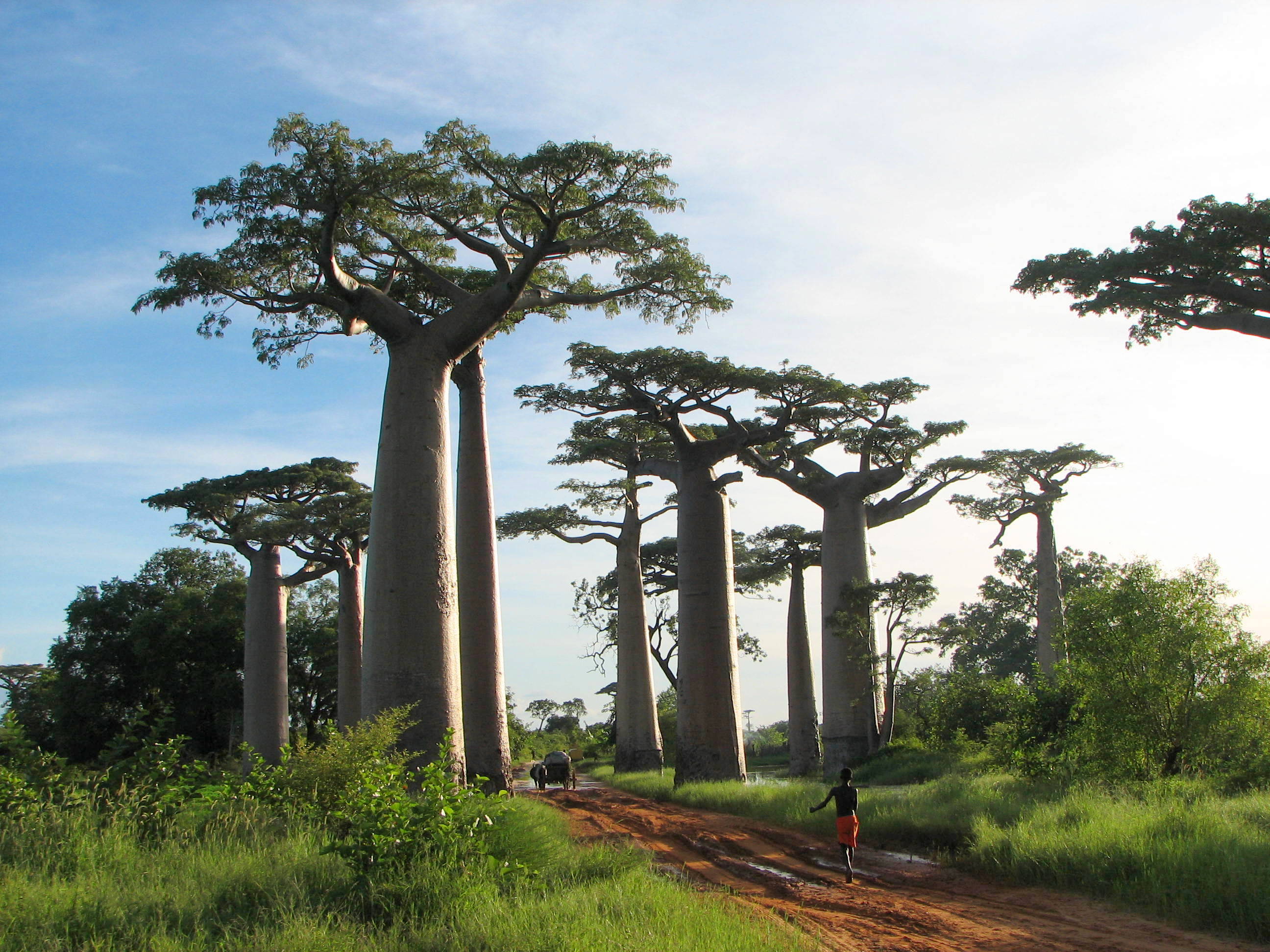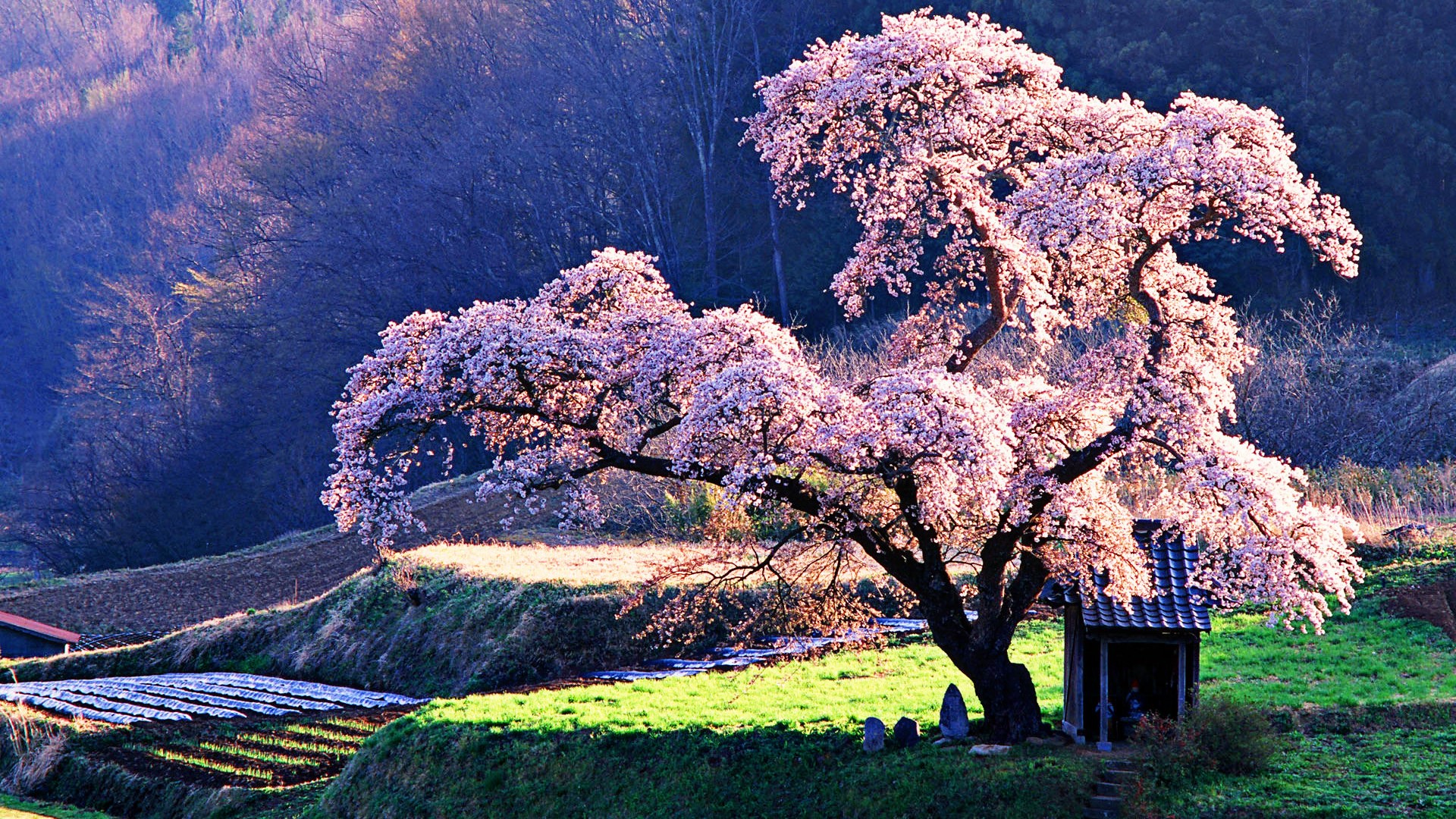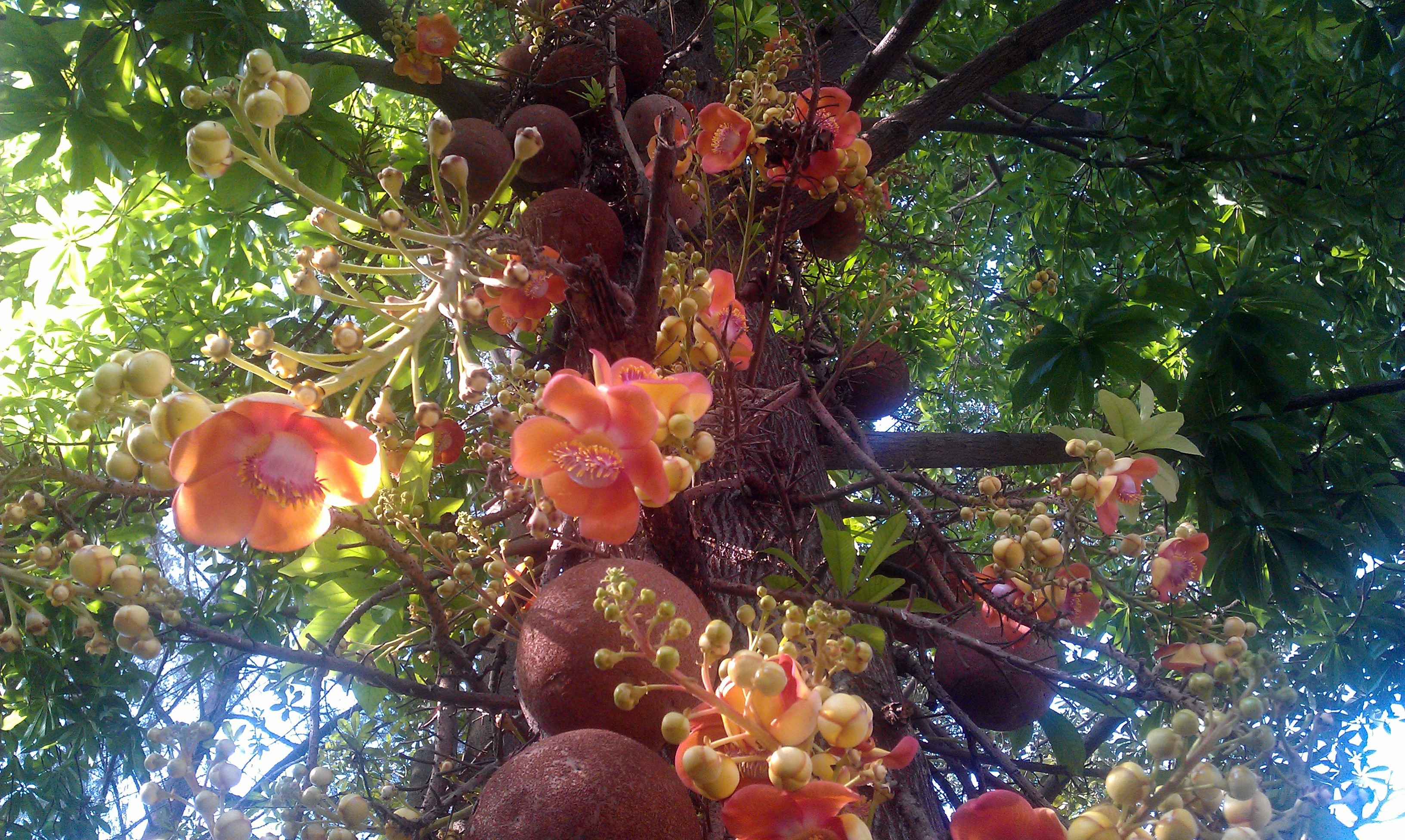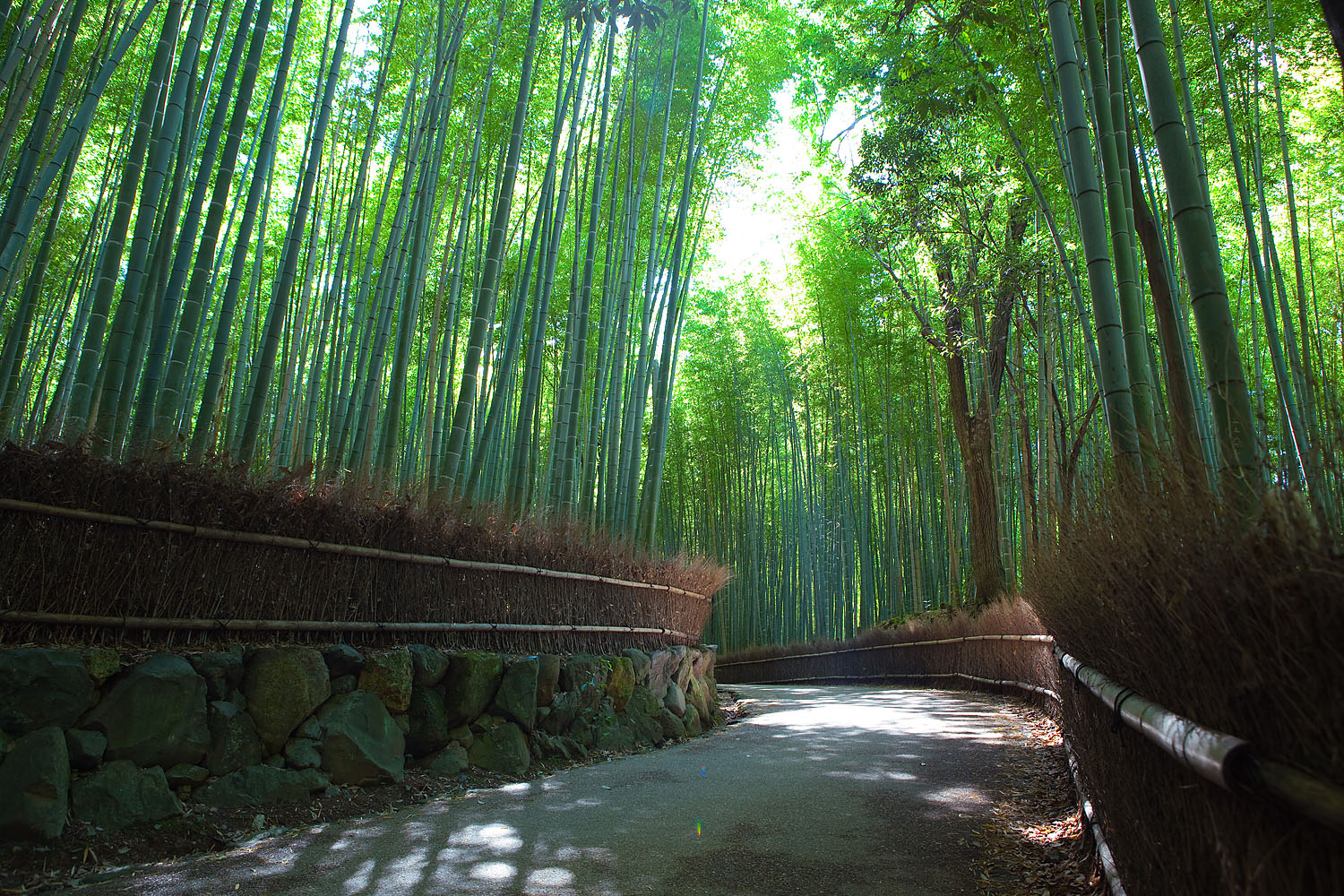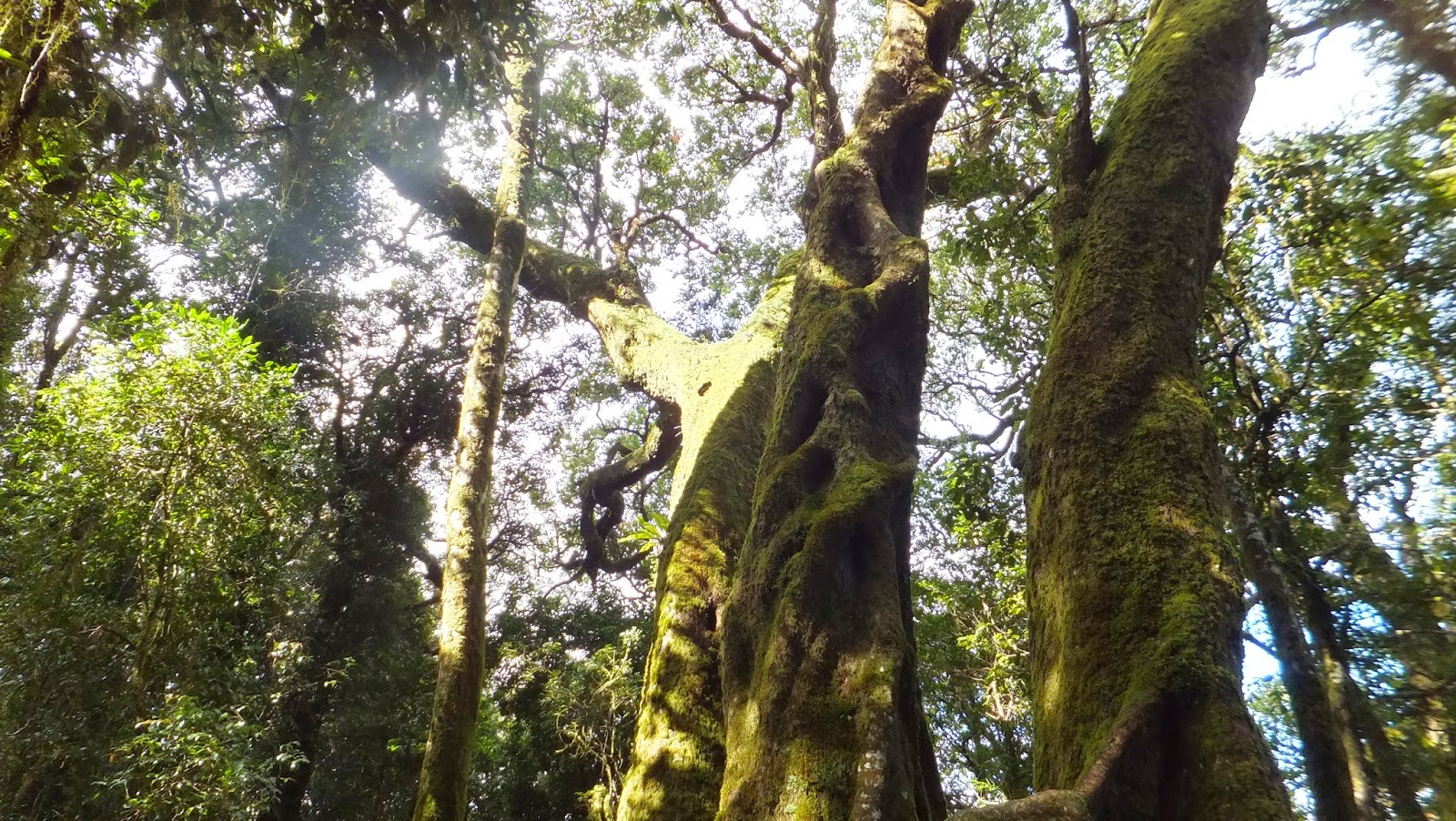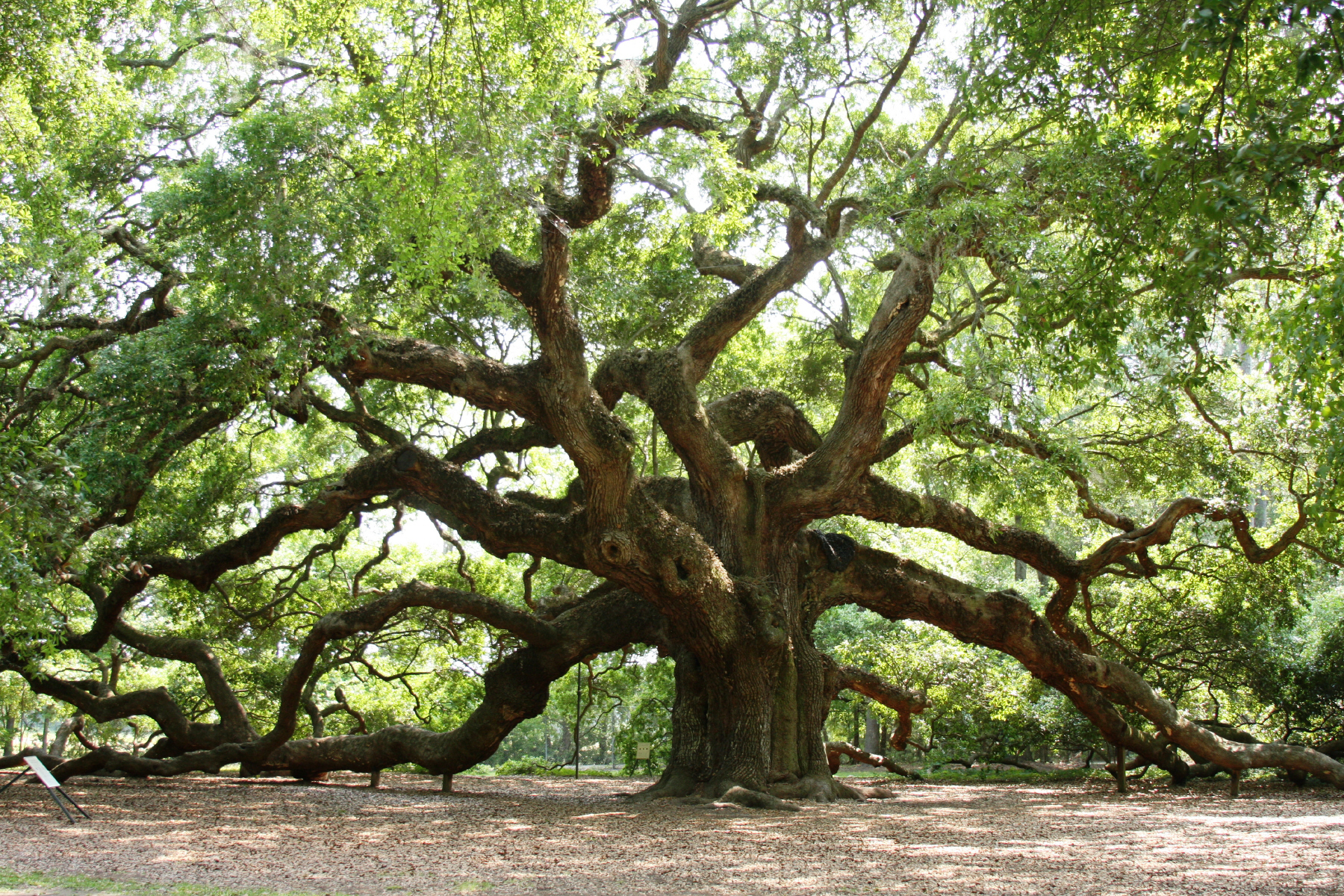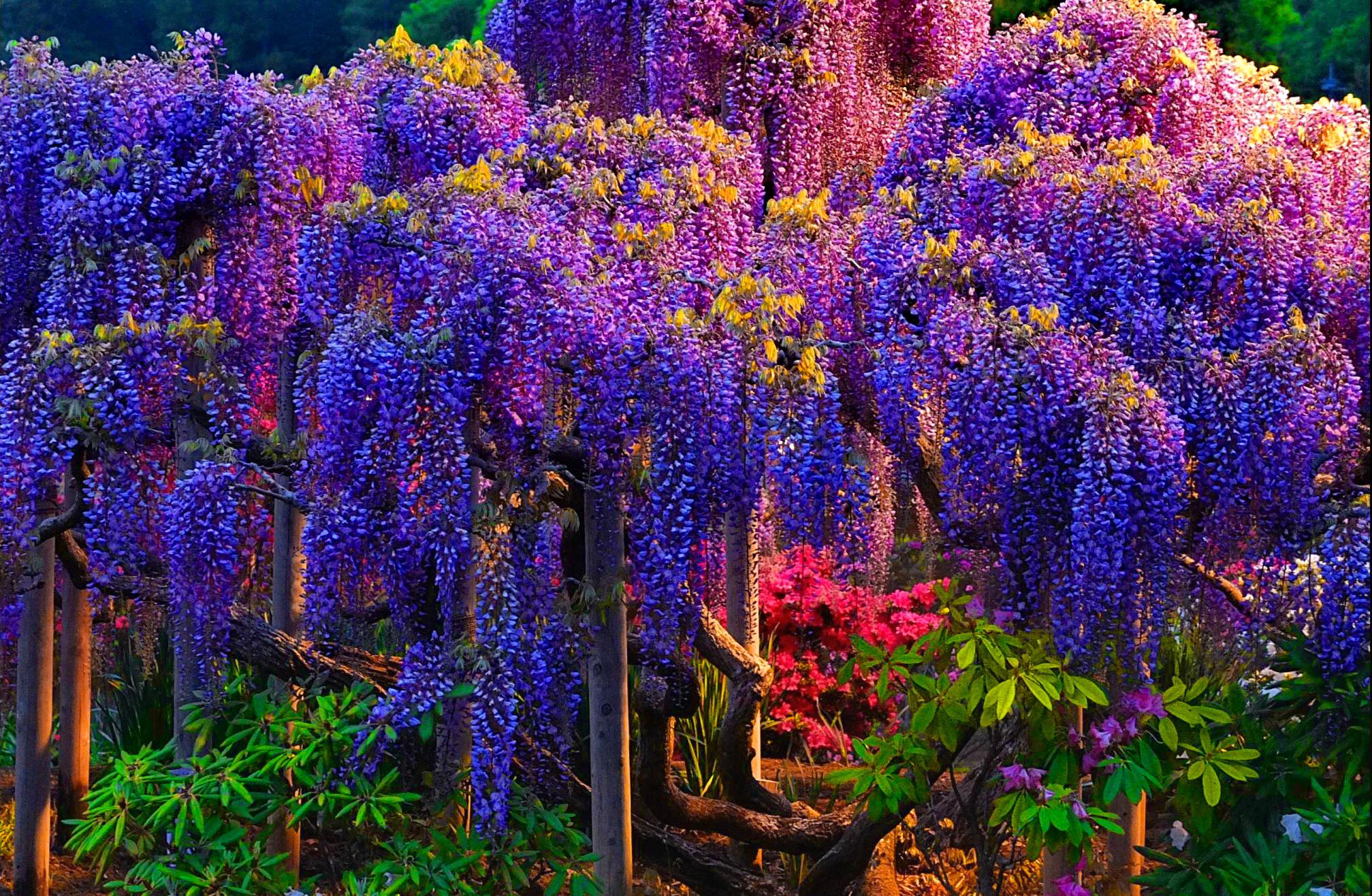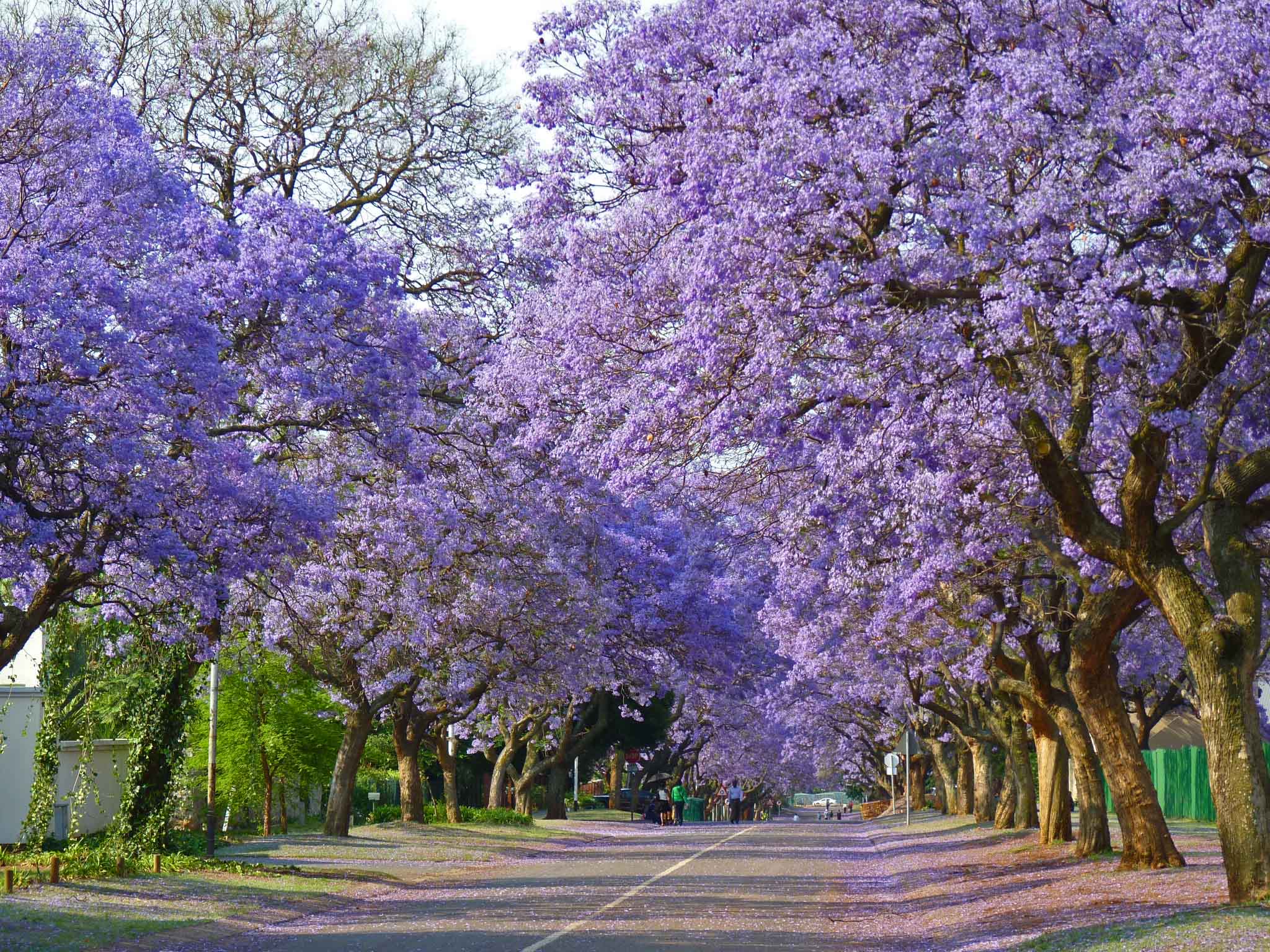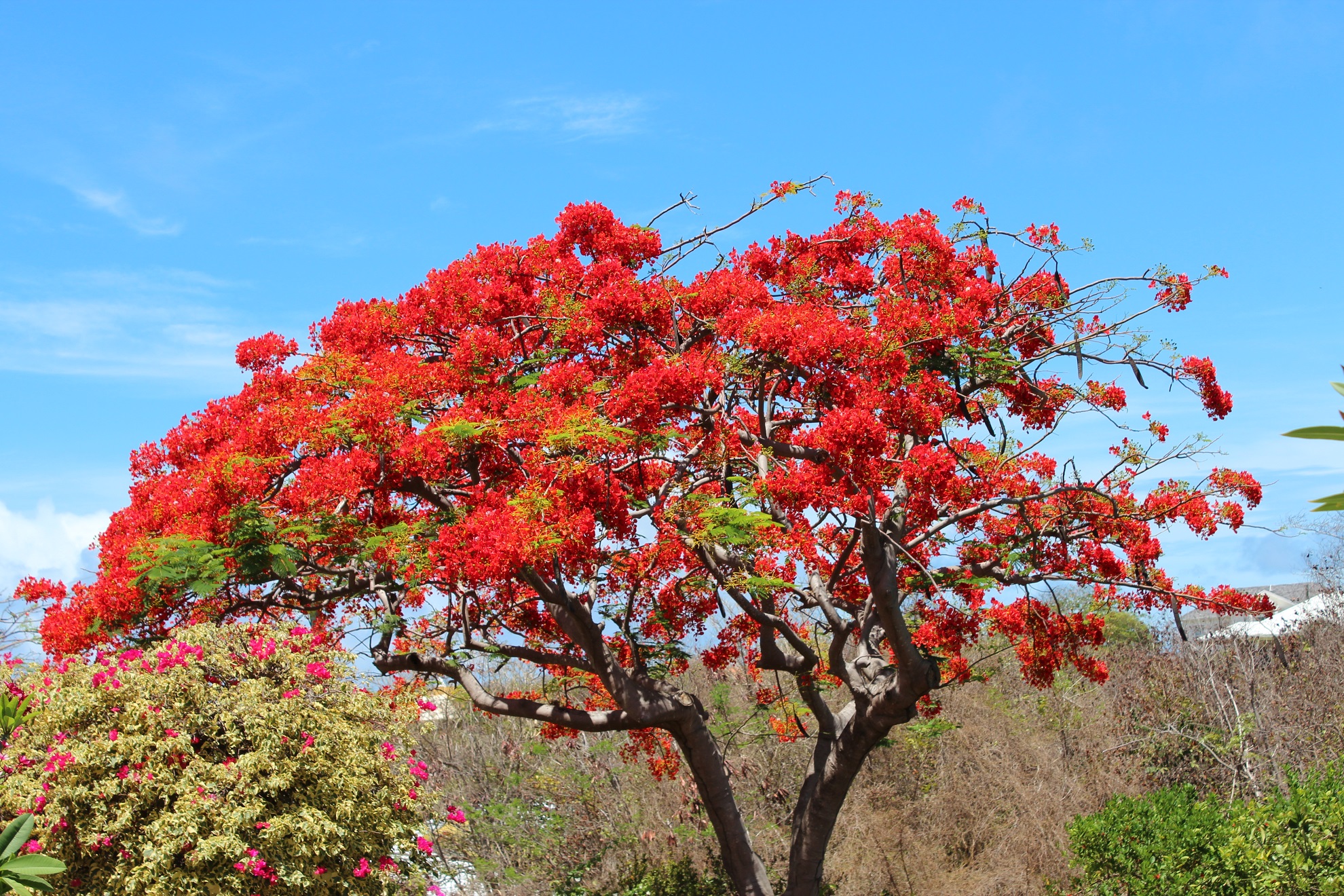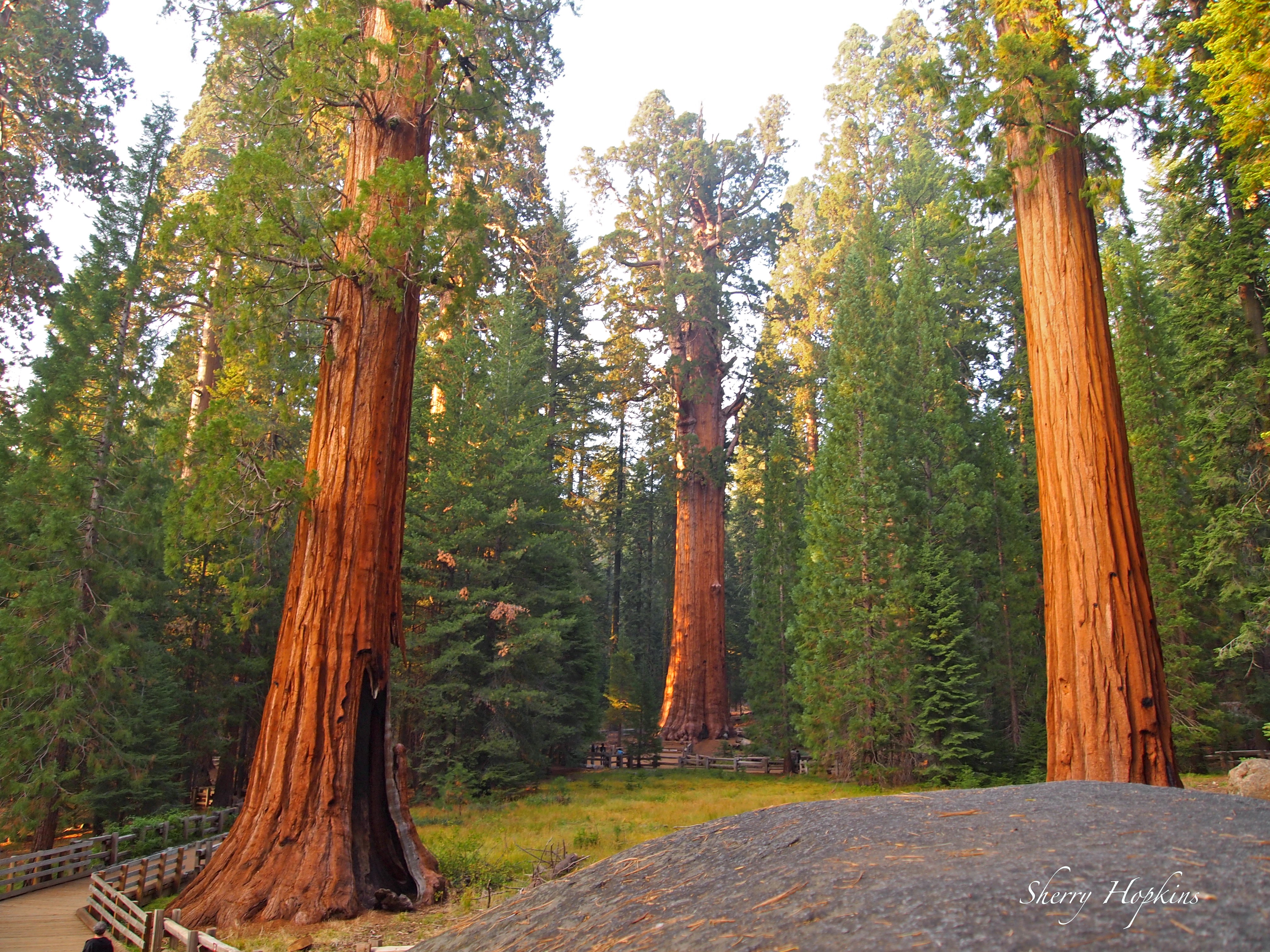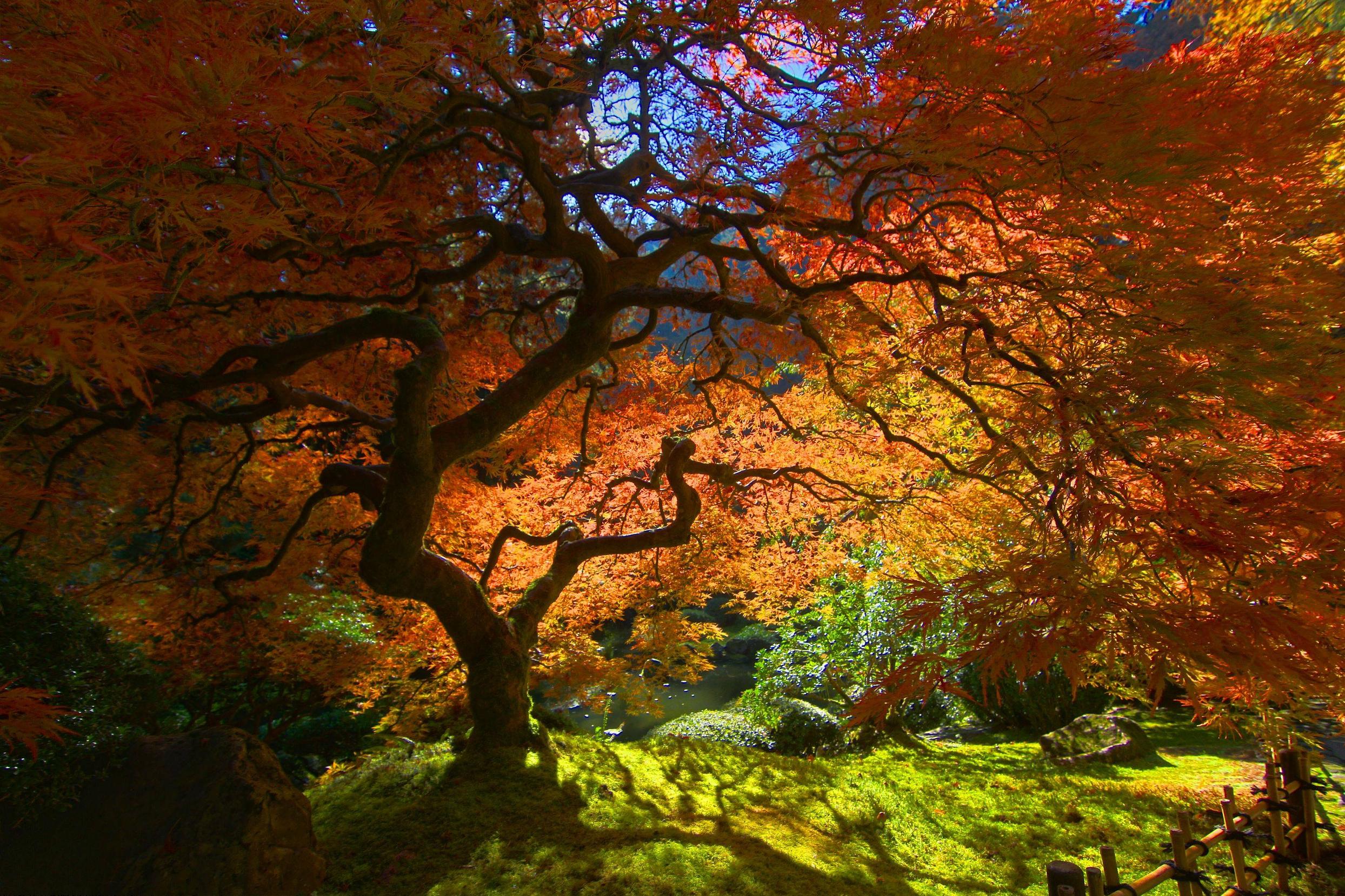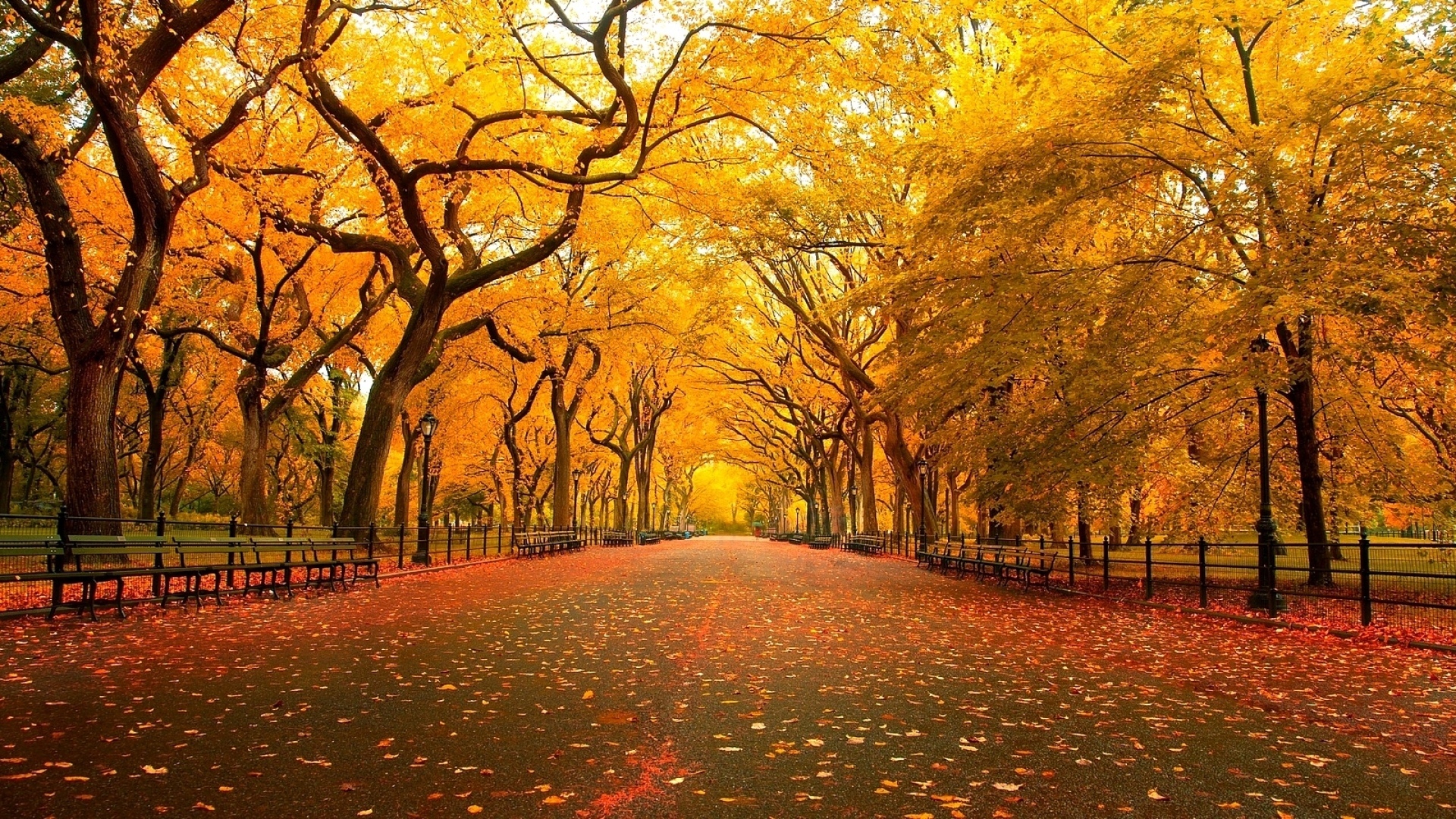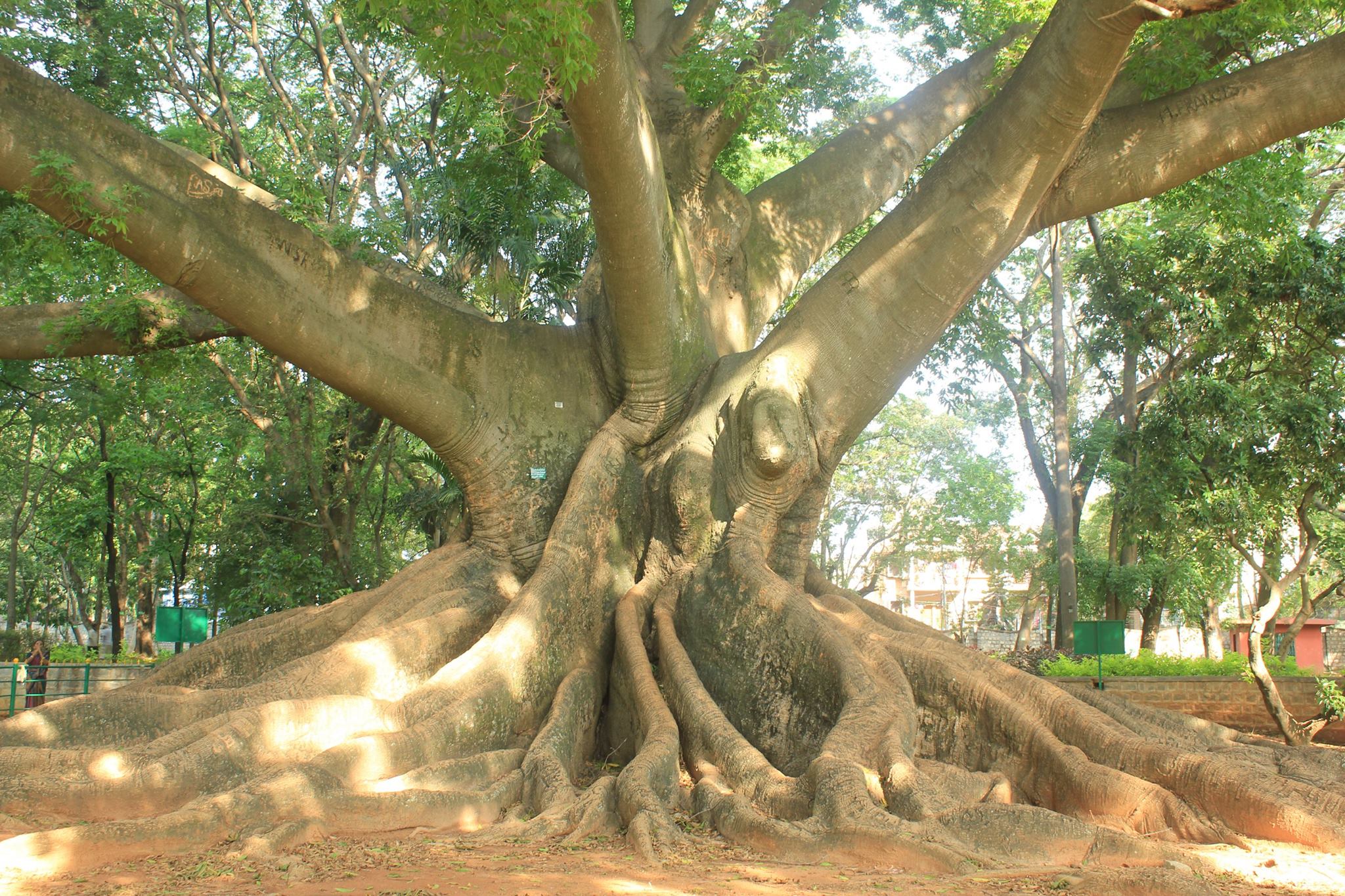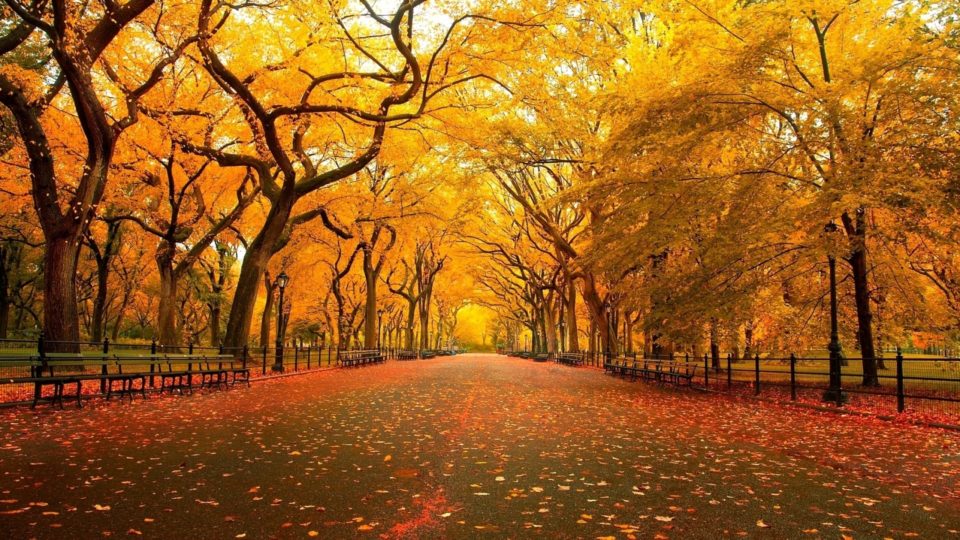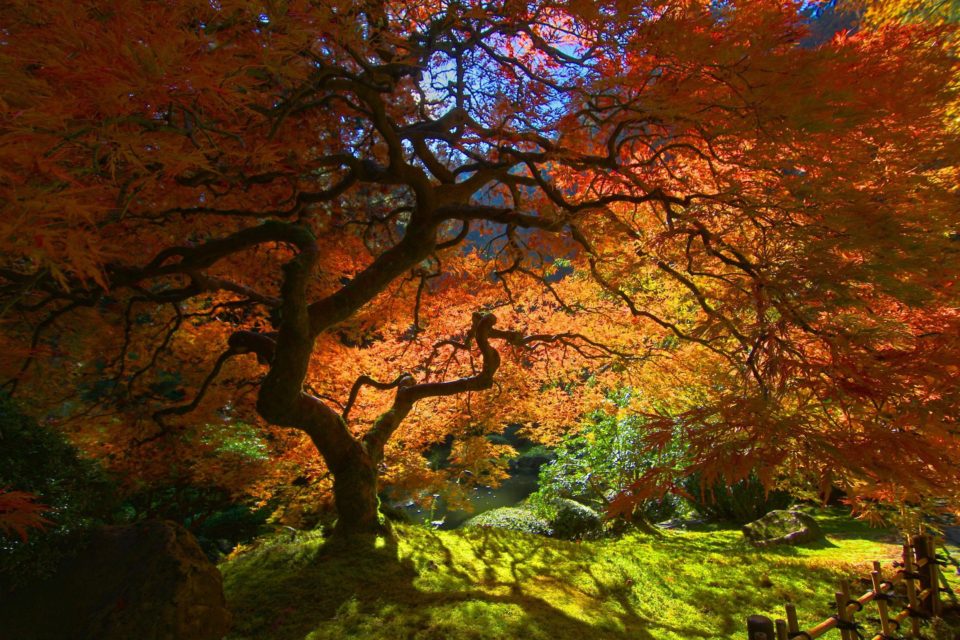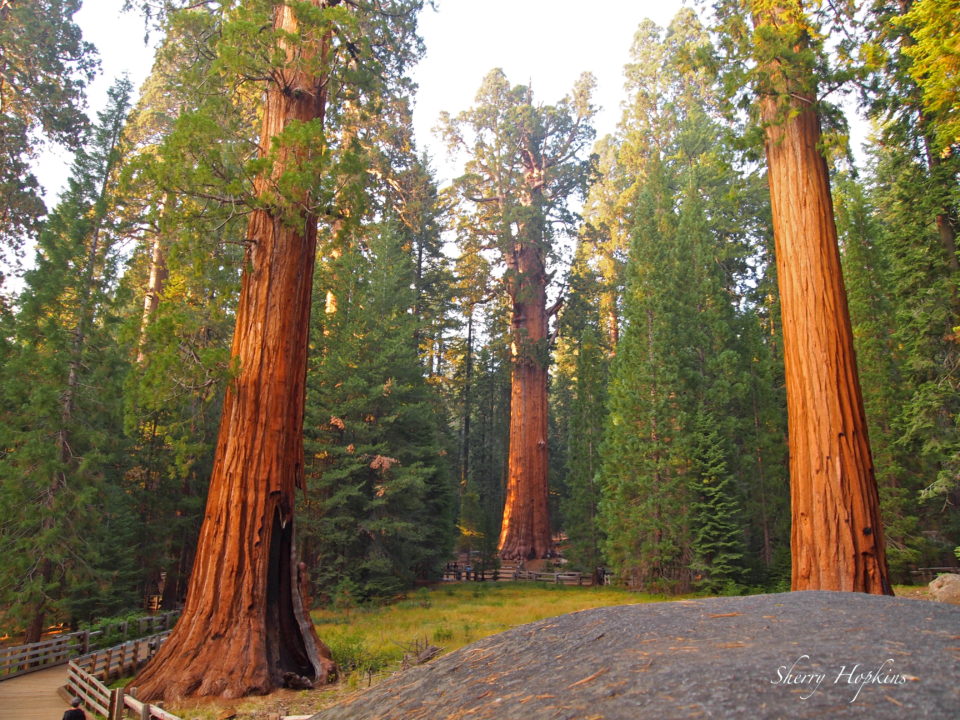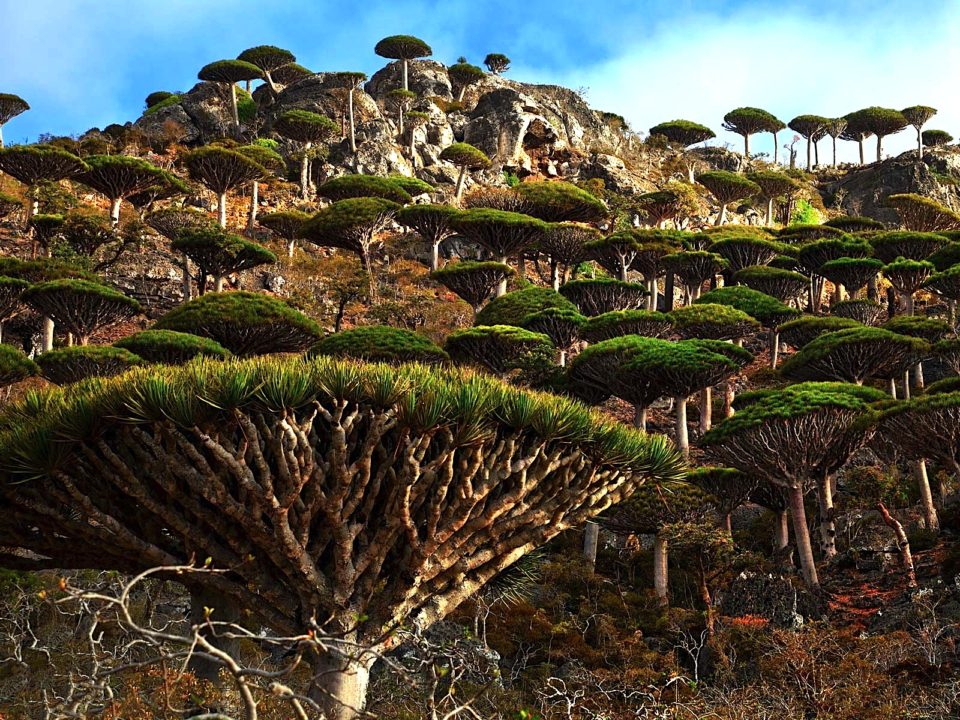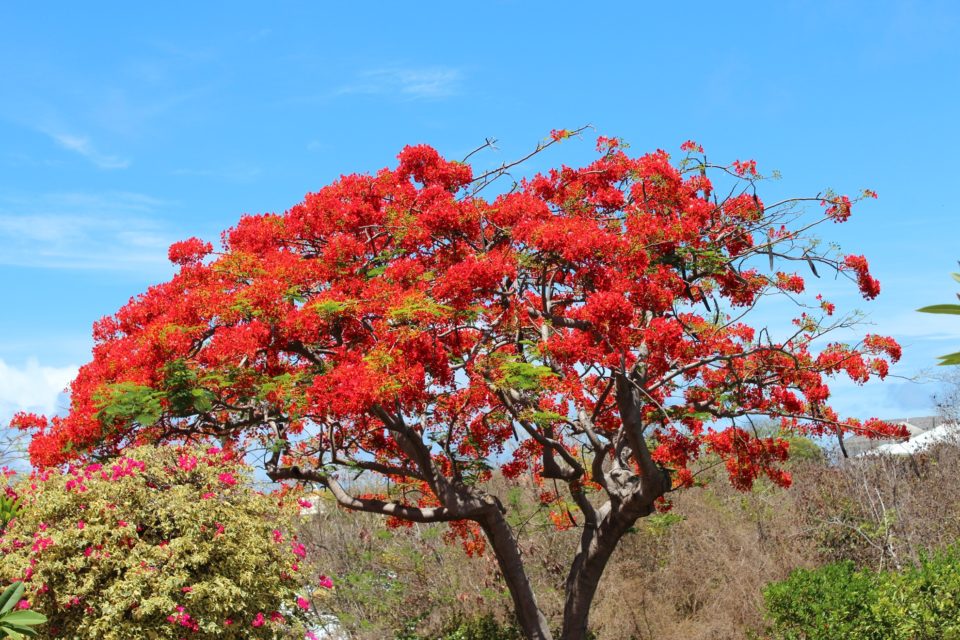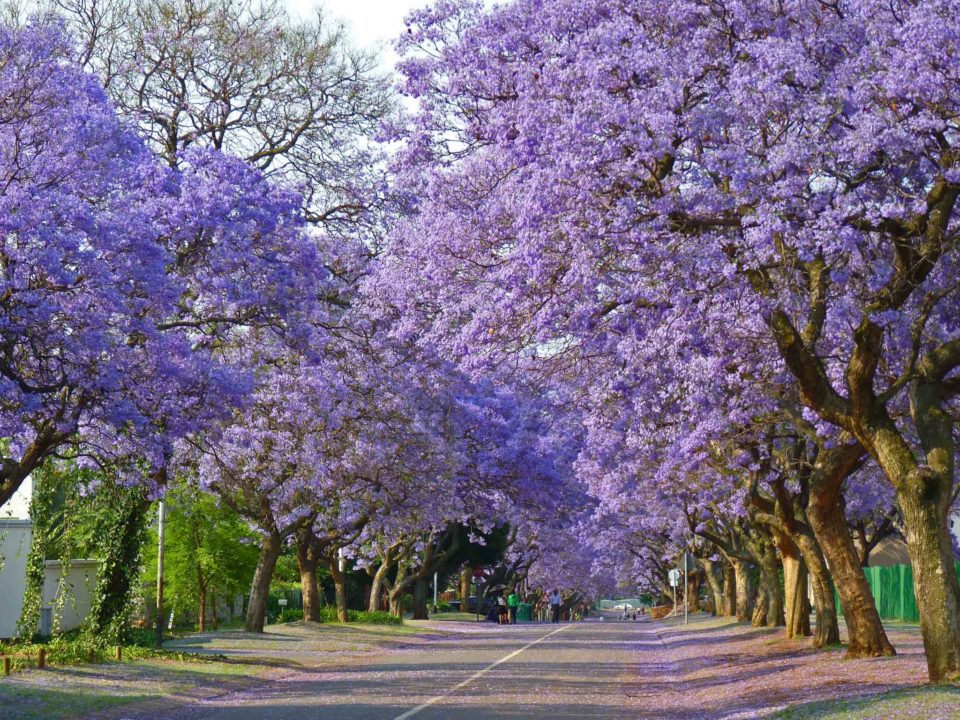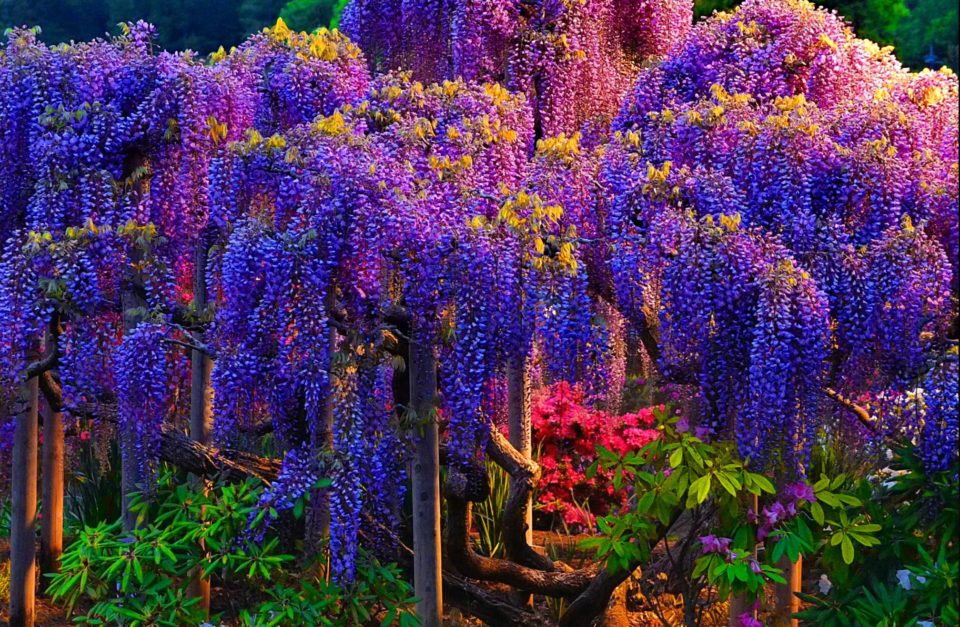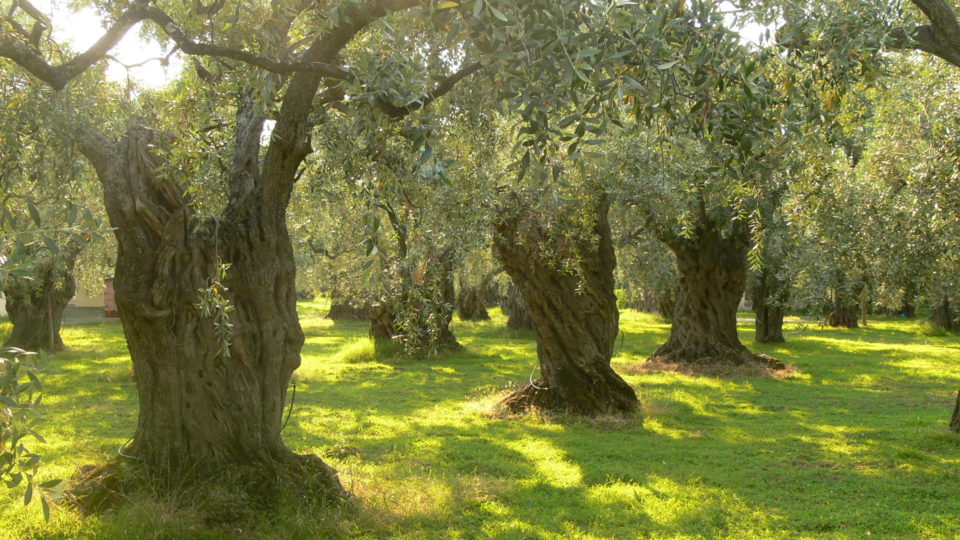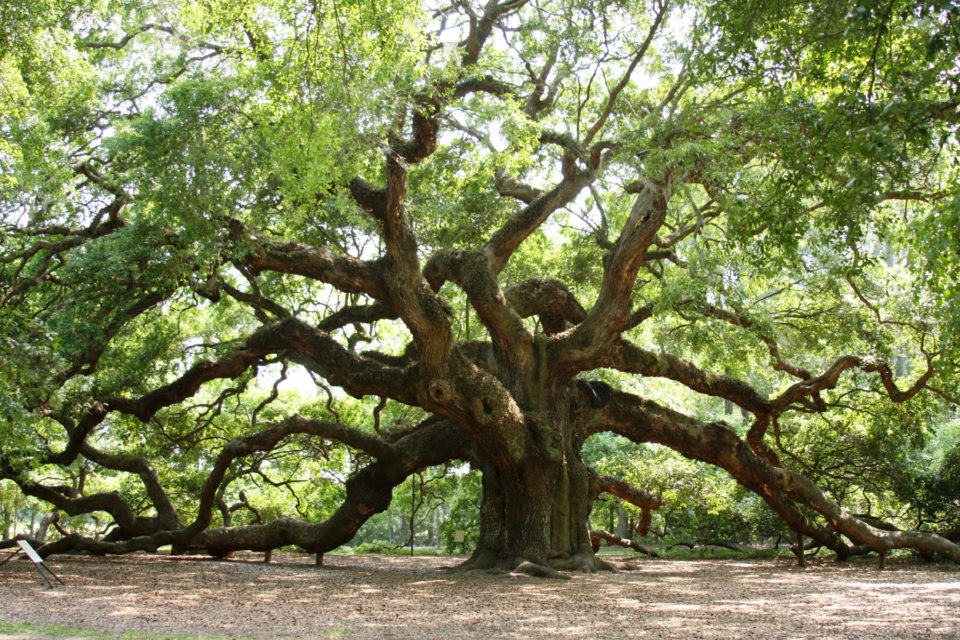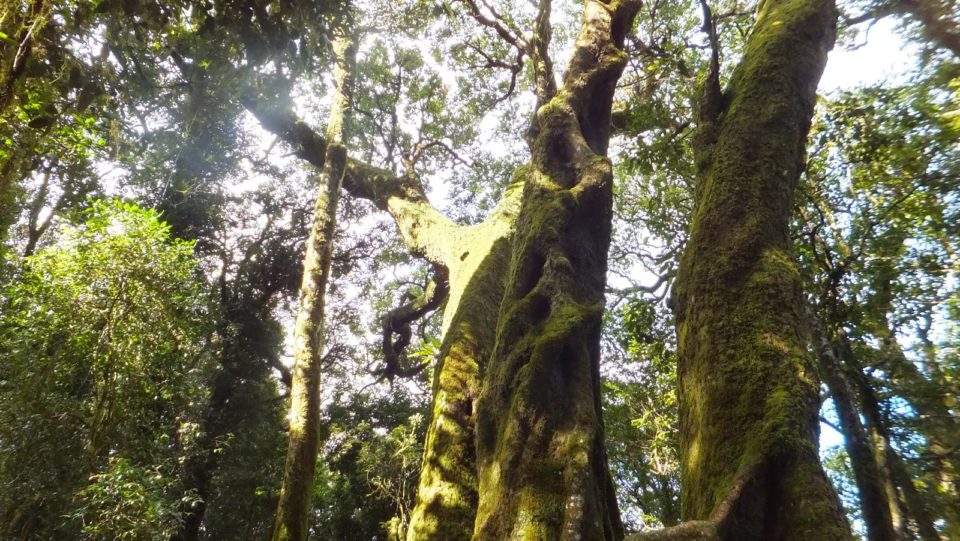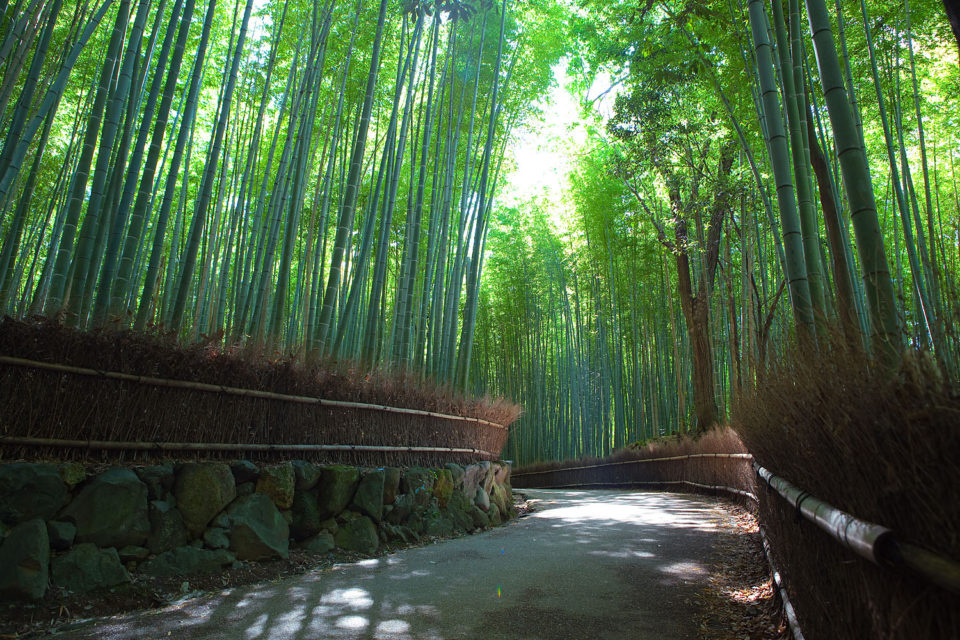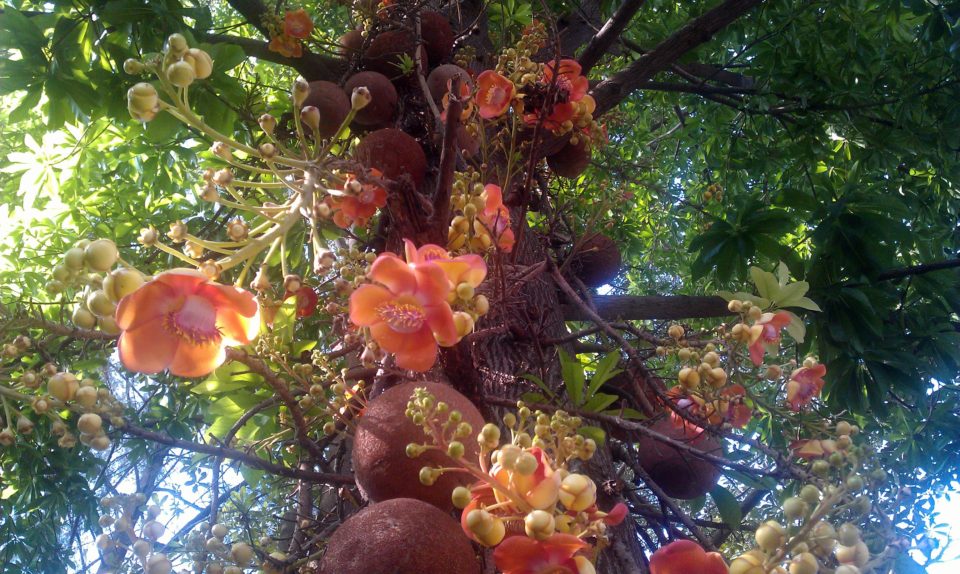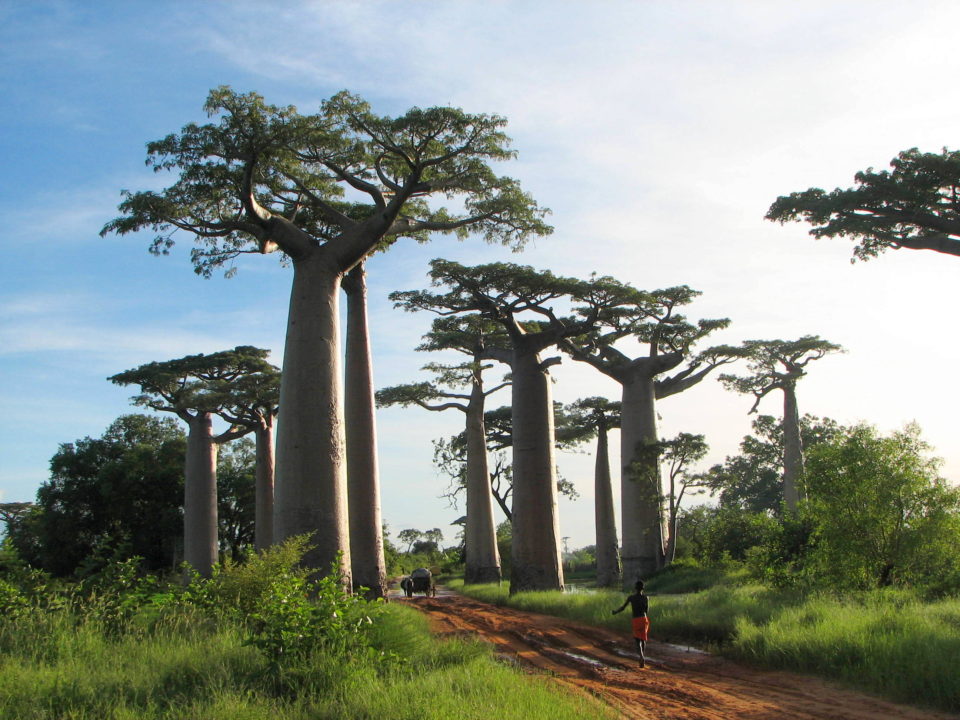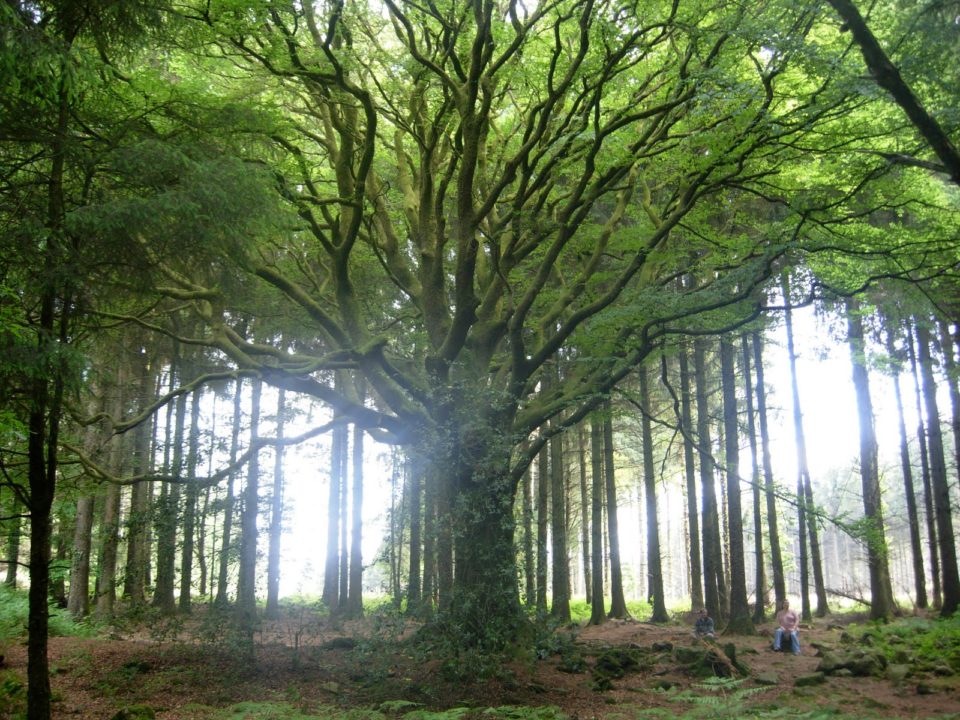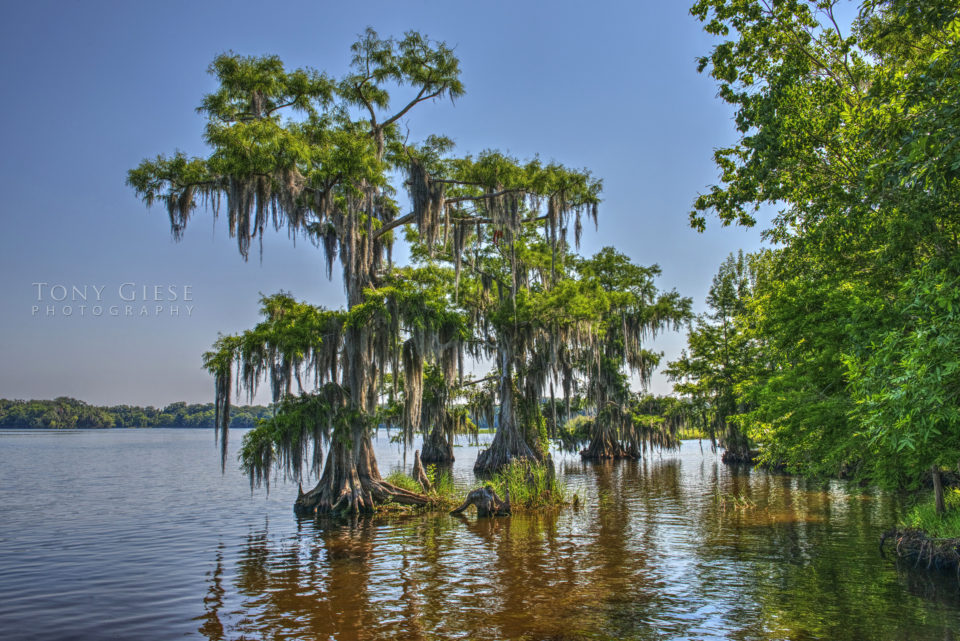Be assured that when the tree bug bites, it clamps down and won’t let go, so don’t scroll any further unless you want to risk finding yourself lost in a rabbit hole as deep as searching for “funny kitten videos” only far more serene and fascinating. Here’s 18 of the most beautiful trees from around the globe.
Silk Cotton Trees
Most famously found in the Cambodian ruins of Ta Prohm, Silk Cotton Trees don’t dazzle with their branches, but rather with their huge, twisting root structures made up of long, wavy, narrow planks that cut into the earth forming flanged walls at the base.
American Elm
One need not look far to find a tree that can cause shock and awe with its seasonal splendor. The American Elm is largely what has made Central Park in New York City so famous. Each year the Elms switch from lush green to a dazzling array of yellows and reds. Friendly and fascinating, there’s few thing better to stroll under for a bit of dappled sunlight.
Japanese Maple
It’s literally unknown how many different varieties of Japanese Maple exist today, with new strains being found and created in gardens around the world. What is known is they are almost all gorgeous and relatively small, making them better for petite gardens where their larger cousins would choke the surrounding foliage.
Giant Sequoia
The most massive tree in the world, the Giant Sequoia (aka Sierra Redwood) can last for hundreds of years and grown to be hundreds of feet tall. Though nearly wiped out by early logging, these gentle giants have survived thanks to the protection of conservation projects to protect the from greedy hands.
Socotra Dragon Tree
Existing only on the Socotra archipelago in the Indian Ocean that belongs to Yemen, these mushroom-shaped trees carry a hard berry that has given them the moniker Dragonblood trees due to the deep crimson hue of the berry’s juice.
Flamboyant Tree
A hot-blooded tree that came from Madagascar but spread to several sub-equatorial countries, the aptly-named Flamboyant Tree will flourish anywhere there’s enough heat and will erupt with volcanic red blossoms every year. Subtle as Carnival in Rio, and stunning as a barn fire.
Blue Jacaranda
Named for the violet blossoms that cover its branches before unfurling their summer wear, the Blue Jacaranda is often forgotten against such splendor as Japanese Cherry trees, but the more tranquil Jacaranda is better for an understated and thoughtful look that is never ostentatious.
Wisteria
Instead of getting taller with time, the rapidly expanding Wisteria trees prefer to move outward, offering ample shade beneath their boughs draped in flowers. At times difficult to control, these drip with purple blooms that bring a royal sensibility to any landscape.
Olive Tree
Not often planted for pure aesthetics, the simple olive tree is a wonderful and wizened plant as much as it is a fruit-bearing piece of the land. Pinpoint blooms complement the twisted and twined trunks for a look that’s fanciful functionality given form.
Angel Oak
Oak trees are among the mightiest pieces in the forest, but can also be one of the most densely beautiful. The Angel Oak of South Carolina bears the same hardwood characteristics of other oaks, but it also spiderwebs out into branches like weighty streamers that reach and claw in all directions.
Antarctic Beech
A staple of the wet wilds in the southern hemisphere, only areas that are profoundly damp at all times and resist fire can grow these gorgeous creations. Thanks to the climate in which they are found, the Antarctic Beech is perpetually draped in greenery that gives it an aged and rugged appearance.
Sagano Bamboo
A single bamboo tree is fairly plain, but with the rapid growth of the plant and its tendency to overrun an area in an extremely short period of time, finding one is a rarity. When combined and compounded into a copse, the Sagano bamboo creates a mysterious darkness that colors an entire area.
Rainbow Eucalyptus
The kaleidoscope of reds, greens, blues, and oranges intermixed with the staid brown of the bark is not the result of selective breeding. These unusual trees wear their stripes naturally, which makes them unusual when seen alone, and a whole dizzying palette when seen in vast numbers.
Cannonball Tree
Normal trees keep their fruits and their leaves together at the tips of their branches. The Cannonball breaks with this tradition by bearing its goods directly on the bark. While this can create a tumorous appearance, just as often it makes the vine-draped trees distinctive and wonderfully odd caricatures.
Japanese Cherry
Perhaps the most famous tree in the world for its beauty, the Cherry trees of Japan herald in each spring with white and pink blooms that first adorn the branches, and then drop away to litter the ground with a breathtaking dusting unlike anything else in the world.
Baobab Trees
There’s actually 8 different baobab species, each with its own characteristics, but they all bear the same lengthy trunk nearly entirely free of branches with a crown of leaves far above the ground. Not only beautiful for their smooth sides, they also carry vast quantities of water, making them a necessary destination for surviving in the hot climates where they grow.
Ponthus Beech
Located in Bretagne, France, this solitary tree proves how immense beech trees can get, and how stunning old age looks when they do. Covered in moss and spreading far, wide, and deep into the surrounding forest, it’s a worthy, if daunting landmark worthy of the trip.
Bald Cypress
Should you happen across a barren, skeletal tree growing straight up out of a lake, supported by aerial prop roots, odds are that you’ve found a bald cypress. Named for its tendency to shed its leaves early in the season, these tend to lend lushness to greenery, or act as a grim backdrop, depending on the season.


